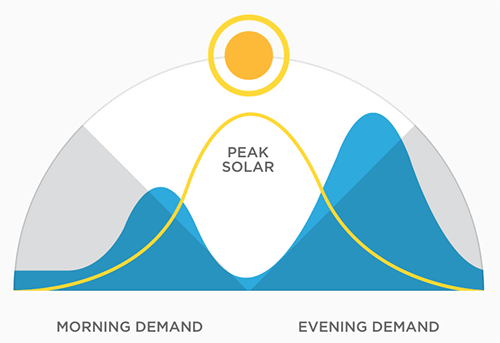Energy Storage Systems Episode 0 : Intro

Hey guys, hope everyone is doing fine! I’ve been learning a few things about Steemit during the last two days and I feel I’m finally getting a hang of it!
Today, I’m back with the beginning of what will be – I hope – an interesting series: Storage Systems!

I meant Energy Storage Systems!
And if you still don’t feel aroused by this idea, well I hope I’ll be able to change that throughout the various articles that I will publish on that subject.
So, What is an energy storage system?
Basically, an energy storage system is the set of methods and technologies that are used to take up a certain amount of energy in a controlled manner – AKA charging – and that allow to store it before releasing it in a controlled manner – AKA discharging.
Most of you might be thinking: Huh, you could have just said batteries… but energy storage systems are much more than that and come in various forms and colors:
- Liquid and polymer batteries such as the famous Lithium-Ion batteries and Lithium-Polymer batteries.
- Solid state batteries such as Supercapacitors.
- Flow batteries such as Fuel cells.
- Flywheels which harness energy in the form of kinetic energy.
- Compressed air where energy is stored under pressure in a mountain or underground.
- Pumped hydroelectric storage where you store energy by pumping water from a lower reservoir to an upper one.
- Thermal which allows excess thermal energy to be stored and used later. This is especially used in Hydrogen Energy Storage or Pumped heat electrical storage.
I’ve decided to stay vague as to how they work as I am going to develop each one of them during the series. I know it’s a lot to handle if you thought that the term battery only referred to what you have in your phone, but you don’t have to remember everything for now just that there are a bunch of categories and each have their advantages and disadvantages.
Why are energy storage systems so important?
I think It is important to answer this question from two points of views:
First of all, that of Renewable energies!
Well you see, we are heading to a renewable era – although slowly – and this is all fun and games until you realise that renewable energies are intermittent.
Intermittent! Meaning that solar panels only produce when there is sun – something pretty rare at 2am huh – and wind farms won’t produce anything if there is no wind to activate the turbines. When all of the conditions are checked, energy production can start, however, we often produce way more than we need at that point in time and if there aren’t any storage systems, well, this excess is lost.

The graph above perfectly illustrates this! The goal is to take the excess energy i.e. the space between the blue curve and the yellow one and store it to use both in the evening and the morning. So energy storage systems are to solar panels what butter is to bread, Starsky is to Hutch, Kobe is to Bryant!
The goal here is to minimize energy losses and make renewable energies more reliable and many countries are aware of the necessity of these batteries if they want to reach their objectives to reach a 100% green energy economy.
So naturally, contracts are multiplying! For instance, Tesla’s Powerpacks in the island of Kauai in Hawaii power the island at nighttime with the excess energy that is stored during daytime.
Moreover, although solar energy is the cheapest form of energy in the world today, thanks to a fierce drop in its Levelized Cost Of Electricity of 73% between 2010 and 2O17, the main issue is that today’s storage systems are extremely expensive which hampers the wide adoption of solar panels.
So, there is a necessity for cheap and efficient energy storage systems. One French startup, Energiestro, with whom I had the chance to exchange a few words has developed a flying wheel made out of concrete which allows to store the excess energy for a fifth of what it would cost for a Lithium-Ion battery. I will talk about them in another post but if you’re feeling curious, you can watch their TEDX talk here.
Then, there are the storage systems used in vehicles, devices and appliances.
While writing this article on my laptop in a small café in Paris, France, I felt something strange. The table vibrated, what is it I thought gasp it was far worse than anything I could have ever imagined, my phone’s battery had dropped to 5%. So naturally, the socially connected animal that I am took his phone, placed his computer under his arm, paid for the coffee and sprinted home so as not to reach the dreaded 0%.
You get the picture, we are constantly searching for batteries that are able to store more, faster and more efficiently. Charging a Tesla model 3 which can travel up to 215 miles takes approximately 5 to 6 hours. Which is good but not if you compare it to other vehicles where a full tank of gas only takes 5 min to make. Indeed, this might hamper your desire to go on a road trip and might prove troublesome if you have an emergency and your car is down to 2%.

To reach the Holy Grail that is a fast charging storage system, companies such as Samsung are developing graphene batteries which would in theory only take 12 minutes to reach a full charge. Even Teenagers are getting at it, in 2013 Eesha Khare developed a prototype supercapacitor that charged much faster and lasted longer than her old battery – shout out to @greenrun who wrote a great article named: A quest for faster charging Batteries where he talked about these supercapacitors.
Just think of the sheer amount of devices that are using batteries nowadays: phones, laptops, cars and even planes. And the trend isn’t going to wane anytime soon. Thus the importance of reliable, efficient and fast charging batteries!
Ok I understand now, but why should I care?
Well if not for ethical purposes you should for economic reasons.
Interest in the energy storage systems knows a stark increase and many companies such as Bain & Company, Mckinsey & Company and Boston Consulting Group have referred to it as a the next big disruption or even Revolution!
The investments in the technologies related to energy storage are also reaching an all-time-high, last year there were 37 investments in battery companies from VCs, and this year it’s likely to reach 60! The amount of money that is being invested in that field is simply astounding:
By 2035 EDF is expected to invest $10billion in energy storage systems.
StoreDot an Israel-based startup which tackles the issue of mobile phones, electrical vehicles and screen display has just secured $20million in investment from BP for ultra-fast charging batteries technology
Farasis Energy raise $790million by signing a contract with China’s biggest auto manufacturers: BAIC to supply them with 1million batteries.
So yeah, Energy Storage Systems are the SHIT!
Hope you've all enjoyed this Article, I'll be releasing the next one in the series soon and it will about the famous: Lithium Ion Batteries!
Feel free to comment, argue, upvote and subscribe!
| N° | Type | Reference |
|---|---|---|
| 1 | Report | energy storage systems |
| 2 | Report | IRENA: Renewable Power Generation Costs |
| 3 | Article | Energy storage Association |
| 4 | Article | CNBC: Tesla’s Power Walls in Kauai |
| 5 | Article | Pod Point: Tesla Model 3 Charger guide |
| 6 | Article | GTM: EDF to invest $10billion in energy storage |
| 7 | Article | Electrek: Storedot ultra-fast charging battery |
| 8 | Article | The Drive: Over 1 billion bet on EV batteries this year so far |
| 9 | Article | Wikipedia: Solid-state Battery |
| 10 | Article | Wikipedia: Thermal energy storage |
| 11 | Article | Wikipedia: Eesha Khare |
| 12 | Company Site | Samsung: Graphene battery |
| N° | Images |
|---|---|
| 1 | Batteries |
| 2 | Storage System |
| 3 | Intermittent energy |
| 4 | Samsung |
| 5 | Acid |
Fun Battery Fact:
In 1798, Alessandro Volta invented the first battery and the electrolyte used in it was diluted sulfuric acid!

Thank you so much! I am studying about ESS now. This article is very useful for me.
Thank YOU for reading the article. I'm happy you enjoyed it, if you want to know more about different ESS you can take a look at the other episodes in the series.
I do not go too far into the technical aspects but I explain how it works and what are the advantages and drawbacks of each technology.
take care!
@bible.com
Wind and solar is often described as "the unreliables". Once the wind stops, no power. Once the Sun goes sets, no power.
If they can get these power storage systems to work then there will be no need for fusion power plants, we can just use the one that is 150 million km away.
I completely agree with you!
We're not at the stage of going 100% green energy yet, but it would be nice if we needn't turn on secondary power plants during times of peak-demand and just use the energy we've stored during daytime.
To do this we also need a grid system that better integrates renewables - something I've talked about in my previous article!
Thanks for the read, the upvote and the comment!
You haven't included the sources of your images and references you based your post on. In steemstem we also make sure all images are free to use. Read more about it here.

Yes I have! They are at the end :)
Concerning the free to use images I did not know and I will fix that ASAP.
Thanks for the heads up though :)